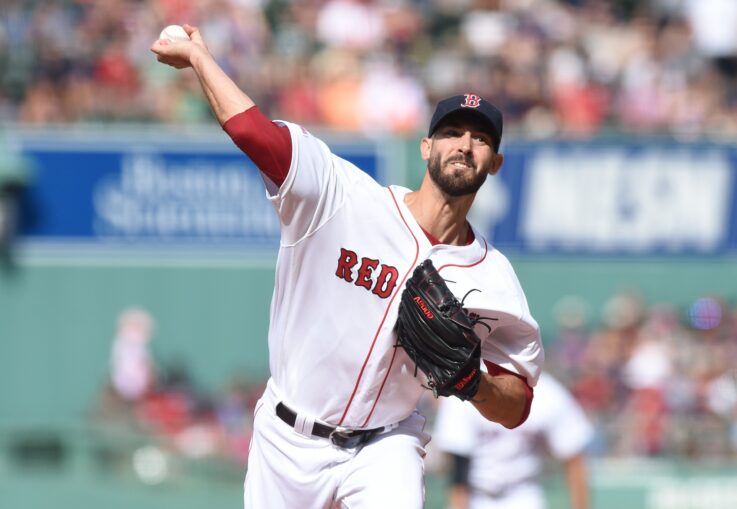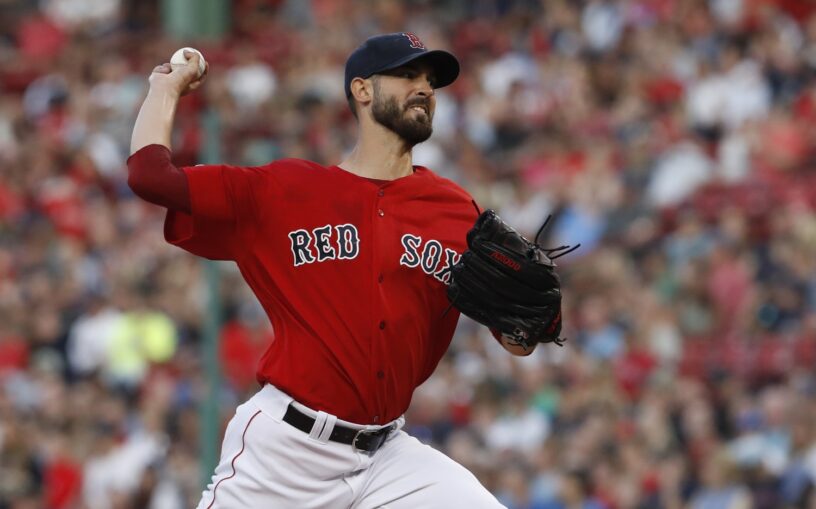
Rick Porcello will be pitching in the National League for the first time in 2020. That fact has some analysts believing that Porcello is due for a jump his numbers.
The thought process tends to go something like this. The American League is the more offensive league due to the DH rule, so it’s harder for pitchers to succeed. So, when they switch leagues pitchers from the AL are due for a boost in their numbers. However, that’s simply not the case.
Since 2015, 12 players have switched leagues on major league contracts and thrown 100 innings the next year. The big names are the ones who usually get recognition. Guys like Max Scherzer, Jon Lester, and James Shields. However, they’re only a small part of this story. In reality, the majority of these switches are made by back-end pitchers, like Porcello.
The issue is that pitchers don’t necessarily fare well moving from the AL to the NL. Six of the 12 pitchers who switched leagues moved from the AL to the NL. Three of them saw a drop in their fWAR while two only saw marginals gains. The only pitcher who unquestionably improved was Max Scherzer.
As a whole, pitchers who have made the move Porcello is making tend to see a fall off. The average fWAR of a pitcher in their final year in the AL was 2.95, but after switching to the AL that dropped to 2.6. That number is also deceptively high. Only two players have made the switch in the last five years and had an fWAR over 1.5, Max Scherzer and Jon Lester.
Even though Lester still put together an impressive 4.9 fWAR season in his first year with the Cubs it was still a drop-off. He had posted 5.4 fWAR with the Red Sox and A’s the year prior.
Contrary to popular belief pitcher actually fair better moving from the NL to the AL. Of the six players who made that move, four saw an increase in fWAR. The highest-profile drop-off in performance was Jordan Zimmermann.
However, back-end pitchers have performed extremely well after making the switch. Wade Miley, Lance Lynn, Charlie Morton, and Edinson Volquez all saw dramatic rises in their fWAR after switching to the AL.
On average these six pitchers had a 1.6 fWAR in their final year in the NL but saw that rise to 2.1 the next year in the AL. That’s a stark contrast to the declining numbers of pitchers who switched from the AL to the NL.
So, no Rick Porcello likely won’t benefit from the league switch. It’s actually more likely to hurt him than help him. Switching leagues is hard to do. It takes time to adjust. Pitchers are pitching in new ballparks against hitters they’ve never faced. Mets fans saw first-hand last season how hard the switch can be with Marcus Stroman.
Stroman had a nightmare August with the team after putting together an All-Star first half with the Blue Jays as he had a 4.91 ERA and 5.20 FIP. However, he was able to turn it around in September after adjusting to his opponents. This was made easy for him considering the Mets spent much of the second half in the division or against the AL.
Porcello won’t get that kind of luck over a full season. He’ll be forced to play places he’s either never or rarely pitched in and face mostly hitters who he’s never faced. If that wasn’t hard enough he’s going to have to do so in arguably the toughest division in baseball.
It’s possible that Porcello has a bounce-back season in 2020. His stuff is still good and Jeremy Hefner‘s analytics-based approach could be incredibly helpful in turning Porcello around. However, don’t expect Porcello to see a boost simply because he’s moving to the NL. The evidence simply doesn’t suggest that should be expected.















